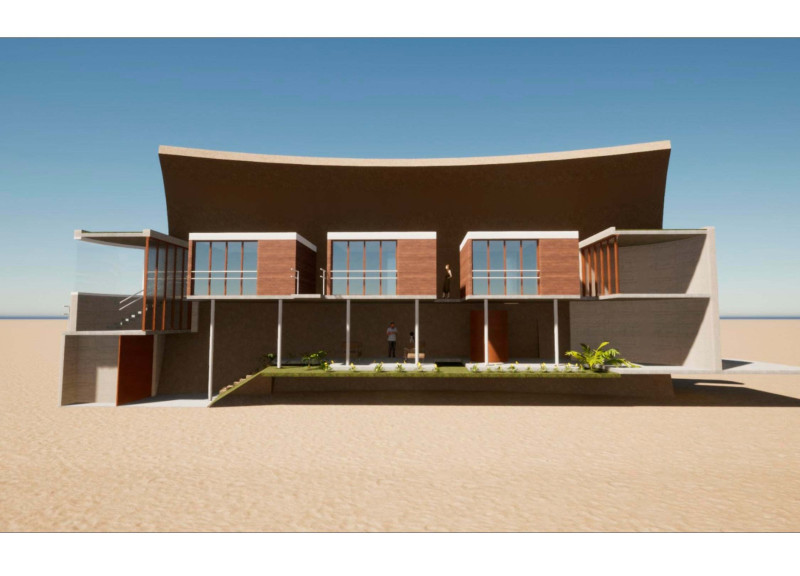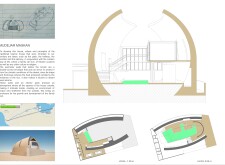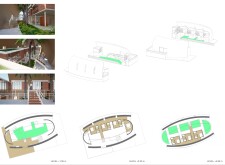5 key facts about this project
### Project Overview
The Mudejar Maskan project is located in a desert region, drawing on traditional Islamic architectural principles while meeting contemporary living requirements. The design emphasizes a family-oriented environment, characterized by a strong connection between indoor and outdoor spaces. Traditional Islamic houses inspire the layout, promoting an intimate relationship among various areas of the home while responding to the climatic and cultural nuances of the surrounding environment.
### Spatial Configuration and User Interaction
The core of the design is defined by the inclusion of a central patio that acts as a hub for family interaction and leisure activities. Complementary to this, the layout consists of well-defined hallways, corridors, and balconies that support the daily life of residents while respecting cultural and religious customs. This organization not only fosters a fluid movement through the space but also facilitates community engagement within the family structure.
### Material Selection and Environmental Performance
Material choices in the design play a pivotal role in addressing local climatic challenges. The use of double-curved walls creates a protective thermal envelope, improving insulation against extreme heat and sandstorms. A composite of reinforced concrete and clay provides structural strength while enhancing thermal efficiency. Large windows utilize glass to maximize daylight penetration, contributing to a vibrant atmosphere while maintaining privacy. Additionally, lightweight steel elements are strategically incorporated to support access stairways and enhance the overall aesthetic coherence.
The design incorporates several features that prioritize both comfort and sustainability. Curved walls improve airflow and mitigate solar heat absorption, critical in desert climates. The multi-level structure enhances the spatial experience by providing varied perspectives and facilitating natural ventilation through operable windows. An interior garden integrated into the patio not only improves air quality but also strengthens the connection between architecture and nature, supporting the well-being of occupants while emphasizing a sustainable approach to residential design.






















































